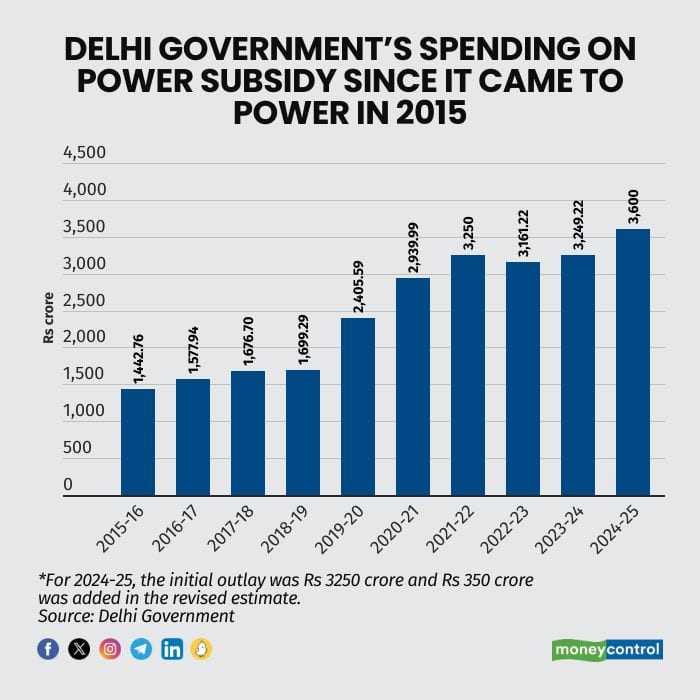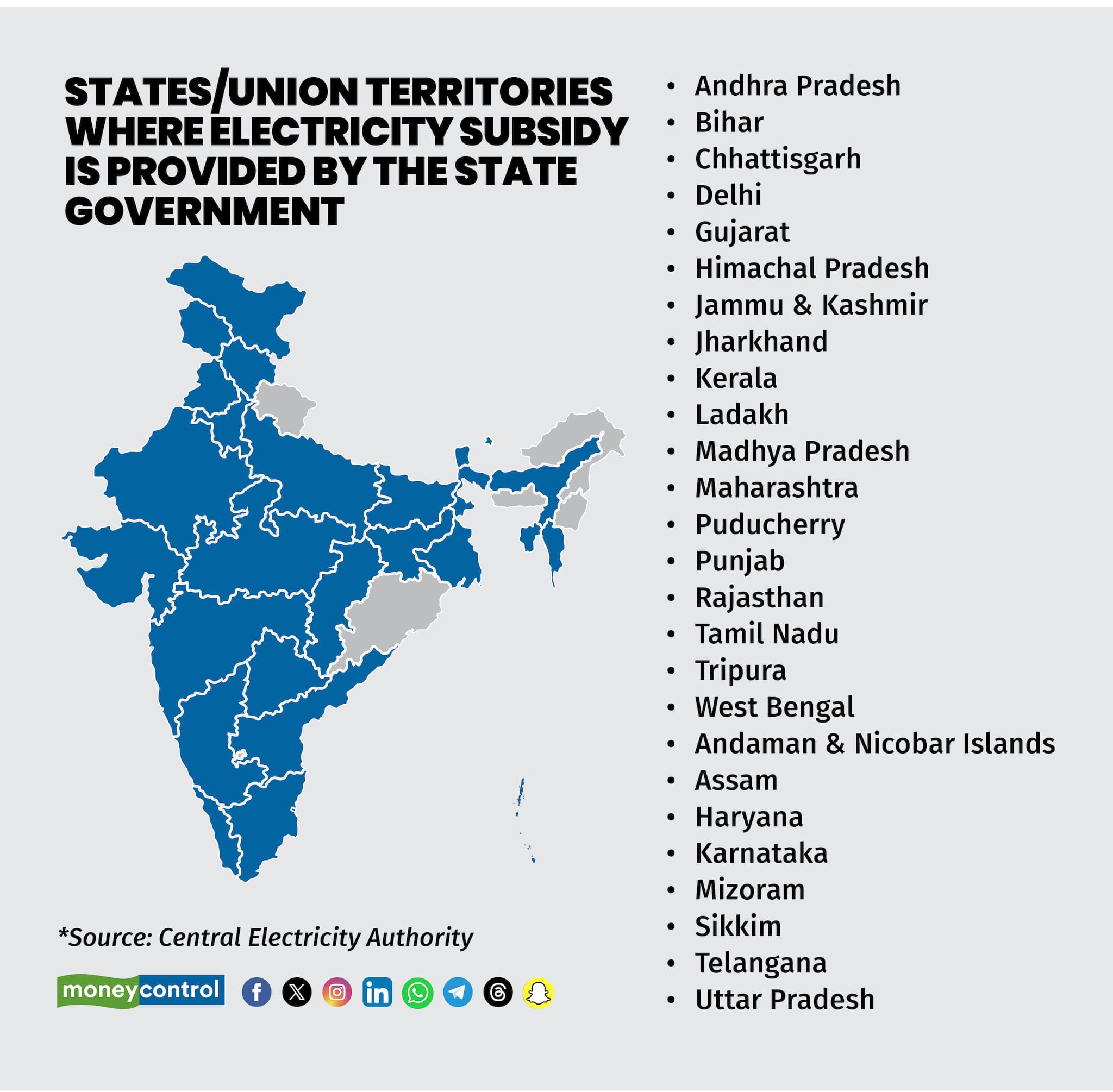



The Aam Aadmi Party (AAP) is looking for a third term as Delhi goes to poll on February 5. The party led by Arvind Kejriwal is once again anchoring its campaign on freebies such as free electricity and giving a monthly stipend of Rs 2,100 to women.
AAP’s subsidy scheme will offer up to 200 units of free electricity to all homes, with a 50 percent subsidy on usage beyond that. Kejriwal said it is aimed to benefit both low-income and middle-class families, with a broader goal of alleviating the financial strain on families and promote energy conservation.
Since Delhi’s contest is going to be a triangular one, both the Bharatiya Janata Party (BJP) and the Congress have gone beyond what the AAP is offering and have upped their power subsidy promises.
Despite its "free ki revdi" jibe against the AAP, the BJP announced that it will not only continue the electricity subsidy implemented by the ruling AAP government, but extend it to commercial owners and middle-class residents if it comes to power.
The Congress announced it will give free electricity not only to those consuming up to 200 units a month, but will extend the coverage to those using up to 400 units.
But, the power subsidy scheme comes at a cost, an increasing one, especially when the number of electricity consumers in Delhi has increased by over 52 percent in the last decade, according to the 2023-24 Delhi Economic Survey,
From Rs 1443 crore to Rs 3600 crore
The AAP government in Delhi has spent nearly Rs 25,000 crore over the past decade on its power subsidy scheme, according to data compiled by Moneycontrol.
 Delhi government's spending on power subsidies in the past 10 years.
Delhi government's spending on power subsidies in the past 10 years.
The total amount of power subsidies released in the first year (2015-16) of the AAP government was Rs 1,442.76 crore, which increased to Rs 2,939.99 crore in 2020-21. For 2022-23, the government spent Rs 3,161.22 crore for power subsidies and Rs 3,249.22 crore in 2023-24. For 2024-25, it had set aside a budget of Rs 3,250 crore, but in the revised estimates the government allocated an additional Rs 350 crore, taking the total outlay for the power subsidy scheme to Rs 3,600 for the current financial year.
Around 4.94 million households received electricity subsidies in 2022-23, for which the Delhi government released a total subsidy amount of Rs 3,161.22 crore, as per its latest Economic Survey. This was an increase of nearly 170,000 households, with 4.77 million households receiving electricity subsidy in 2021-22.
Whichever party forms the government in Delhi on February 8, the counting day, it will inherit the longstanding problem of poor financial health of the city’s distribution companies (discoms).
Subsidies leading to discoms’ financial distress
The power subsidies have resulted in piling up of regulatory assets or accumulated tariffs to the tune of Rs 27,200 crore for the distribution companies in Delhi. For BSES Rajdhani Power Limited and BSES Yamuna Power Ltd, the regulatory assets amount to Rs 21,400 crore, while for Tata Power Delhi it is Rs 5,800 crore.
Regulatory assets in the power sector include previously-incurred losses that are in the nature of deferred expenditure. The way to liquidate regulatory assets is to impose cost-reflective tariffs on consumers, which is not imposed by most states as a populist measure.
The format of offering subsidised electricity to majority of the households in a state or union territory was steered by the AAP since it came to power in 2015. But now, governments in at least 26 states and union territories are offering at least some form of power subsidy, resulting in financial woes for most discoms across the country.
 States and Union Territories where electricity subsidy is provided by the State Government.
States and Union Territories where electricity subsidy is provided by the State Government.
To be sure, electricity subsidies existed in India even before the AAP came to power. But, they were special schemes specifically targeted toward certain sectors such as agriculture or those falling below the poverty line.
Summing up the the problem of poor financial health of discoms stemming from power subsidies, Union minister for power Manohar Lal Khattar said in November that the current cumulative debt of discoms in India is Rs 6.84 trillion, and the accumulated losses stand at Rs 6.46 trillion as of now.
In November, 2022, Prime Minister Narendra Modi too had urged states to resolve the issue by saying, “People will be surprised to know that different states have outstanding dues of over Rs 1 lakh crore. They have to give this money to power gencos (generation companies). Power distribution companies (discoms) are owed more than ₹60,000 crore. These companies are unable to get even the money committed for subsidy on electricity in different states. This arrear is also more than Rs 75,000 crore.”
Discover the latest Business News, Sensex, and Nifty updates. Obtain Personal Finance insights, tax queries, and expert opinions on Moneycontrol or download the Moneycontrol App to stay updated!
Find the best of Al News in one place, specially curated for you every weekend.
Stay on top of the latest tech trends and biggest startup news.